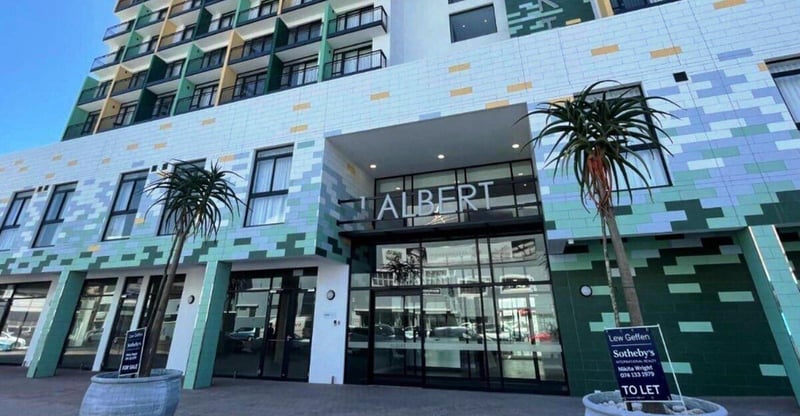Urban Innovation Or Economic Despair? The Rise Of Co-living In South Africa
Submitted by: BizCommunity Editor Save to Instapaper
Lew Geffen Sotheby’s International Realty chief executive officer Yael Geffen says the rapid rise of co-living spaces and micro-apartments in Johannesburg, Cape Town and Durban has sparked a heated debate: Is this innovative urban adaptation, or merely a symptom of the country’s broken economy?
The co-living revolution: Affordable or compromised living?
Developers are aggressively repurposing underutilised buildings into a shared living hub where tenants trade private space for affordability and community.
In Cape Town’s Woodstock and Johannesburg’s Braamfontein, companies like The Student Hub and CoLiv report waiting lists for their R6,500 to R8,000 per month rooms that include servicing and WiFi.
“This is a necessary market correction right now when consumers are drowning in debt and the vast majority are battling to keep heads above water,” says Geffen.
“For most young professionals buying a home is an impossible dream at the moment with the cost of living remaining so high. In fact, they’re even being priced out of conventional rentals, but they still need proximity to urban work hubs.
“Co-living fills that gap intelligently by optimising space and reducing costs through shared amenities.”
Micro-apartments: Big demand for tiny spaces
Sub-30m² micro-units – once unthinkable in South Africa’s historically spacious housing market – are now selling out in developments like Cape Town’s 1 on Albert in Woodstock and Sandton’s The Bryant. Prices start at 20% below standard studios, appealing to singles who prioritise location over square metres.
Geffen notes: “The success of micro-apartments proves that in the current economic climate affordability trumps size for many buyers. But developers must innovate – think modular furniture, premium finishes, and tech integration – to avoid these feeling like glorified hotel rooms."
She says Cape Town’s developments tend to be the most successful in the country at the moment, because the market thrives on scarcity.
“Developers convert heritage buildings into chic spaces, achieving an average of 22% gross margins - nearly double Johannesburg’s conversions.”
Others are new developments like 1 on Albert, offering semi-furnished micro-apartments starting at 21m² that include 24-hour security & CCTV surveillance, biometric access controls, a heated swimming pool, communal recreation area with braai facilities and super-fast internet connectivity. Prices at this state-of-the-art development that is less than 2km from the CBD begin at below R1m.
The risks: Will this model last?
Despite the buzz challenges loom, warns Geffen. These include:Investor scepticism: Banks remain hesitant to finance micro-developments, seeing them as untested.Cultural resistance: Many South Africans still view compact living as a downgrade.Oversupply risks: Durban’s Umhlanga corridor already shows signs of co-living saturation.“The danger,” warns Geffen, “is that we mistake a stopgap solution for a cure. Co-living can’t replace the need for broader housing reform, including faster planning approvals and incentives for mid-income developments.”
Temporary fix or future norm?
Geffen says industry leaders are split on whether this trend will last. While some predict co-living will grow to 15% of South Africa’s urban rental market by 2030, others argue it’s merely delaying a reckoning with unaffordability.
“The real test,” says Geffen, “is whether these models can evolve beyond student and young professional niches to serve families and older demographics. That’s when we’ll know if this is truly transformative or just a Band-Aid.”
Geffen says key market questions going forward include whether local government entities will relax density restrictions in a greater number of suburbs to enable more micro developments, whether these developments will be the turning point for inner-city decay and whether more relaxed density zoning in wider areas will make it more affordable for buyers to get onto the property ladder.
“South Africa’s housing crisis won’t be solved by one solution alone.
“This trend isn’t a total fix, but for now, co-living and micro-apartments are to some extent rewriting the rules of urban residential design and offering a solution to younger professionals struggling to make ends meet with the immensely high cost of living in the country’s stagnant economy.”
Latest Press Articles
- SA New Vehicle Sales Climb 22% In May As Interest Rate CUT Boosts Confidence
- Fore Group Launches Redesigned Website With SO Interactive
- From Learning TO Earning - How TO Accelerate Africa's Digital Economy
- Engineers' Liability For Professional Negligence
- Melanie Paltoglou’s Journey From Childhood Curiosity To Wine Country Inspiration In Hemel-en-Aarde
- Vodacom Names New CEO For International Operations
- The BIG Biodiversity Challenge 2025 Is Open For Entry
- Weber Shandwick Appoints Sibongile Mqakayi As Client Growth Lead
- Tutoring - NOT Just For Struggling Students - A New Normal For SA Kids
- French Wine Powerhouse Advini Set TO Expand ON Its 15 Year-old Footprint In South Africa As New Opportunities Beckon
- National Arts Festival Board Announces 2 New Appointments
- South Africa's Commerce Media Moment Has Arrived - The Experts Weigh In
- Africa-Paris Declaration - Financing Africa’s Energy Future
- Jockey Skimmies Are Back - The Iconic Seamfree Essential Returns By Popular Demand
- Mining In Motion - Ghana Unveils 5-pillar Strategy TO Transform The Mining Industry
The Pulse Updates
- Switching On The Future - Landmark Electricity Expo Comes To Joburg (June 3, 2025)
- Timeless, Bold, And Distilled With Care - Just Like Dad (June 2, 2025)
- New Report Reveals Msme Funding Realities In South Africa – And What Must Change (May 30, 2025)
- Opinion Piece: Incorporating Ai Into Workforce Planning (May 26, 2025)
- Bridging The Gap: Why Finance And Hr Must Collaborate For Business Success (May 19, 2025)
